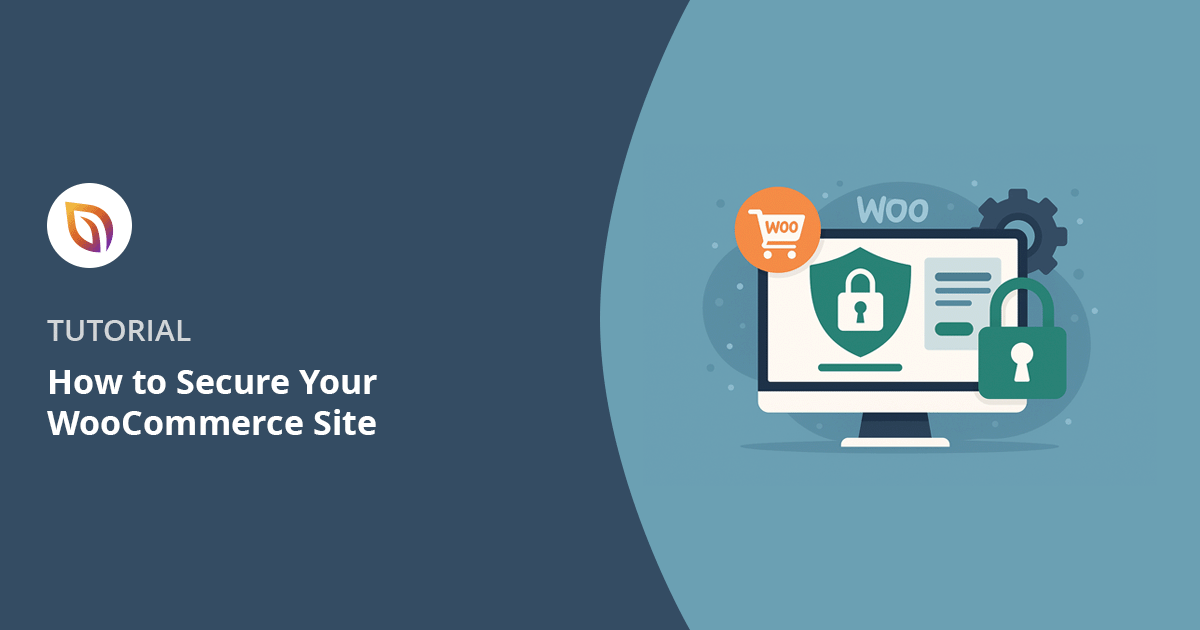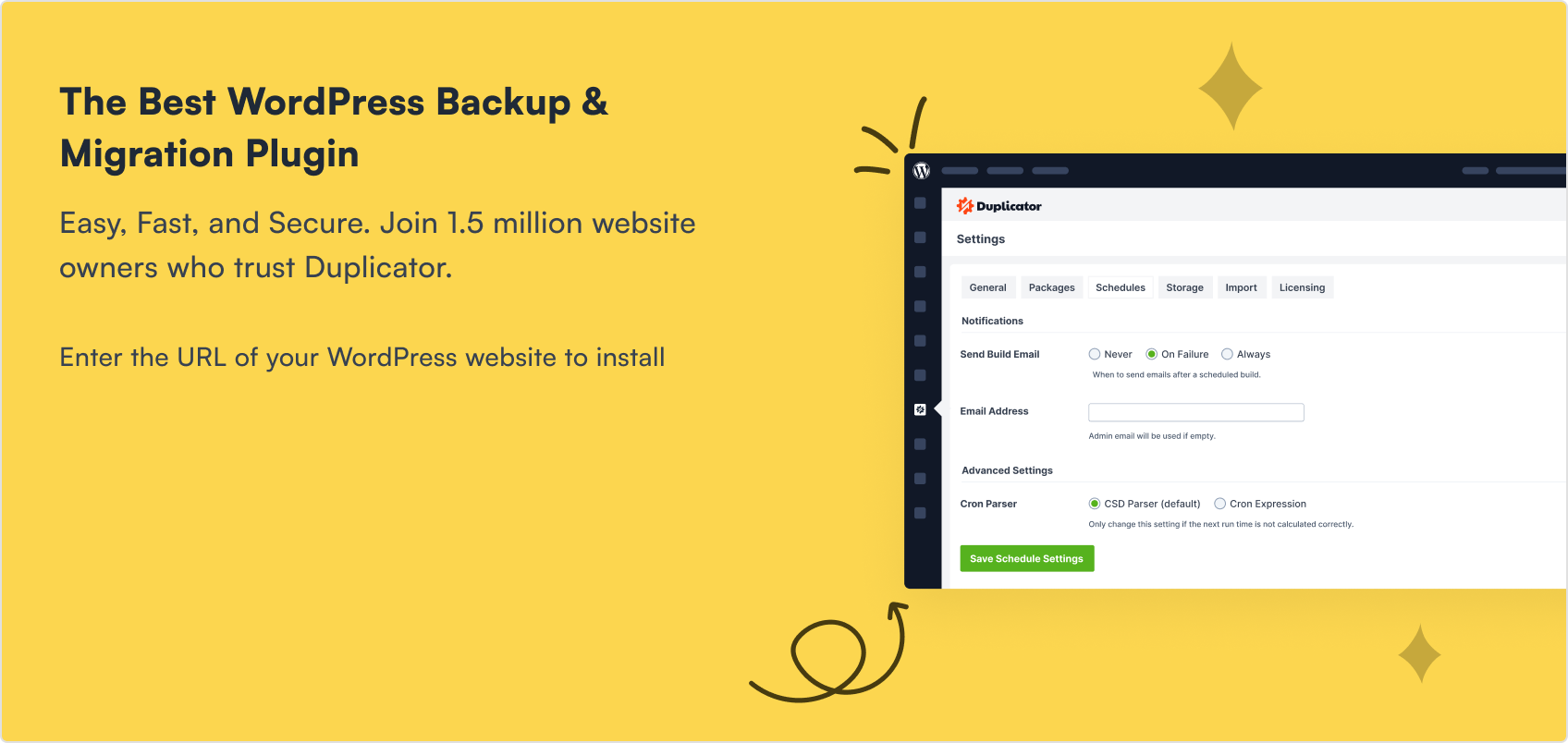WooCommerce is secure by default, but that doesn’t mean your store is fully protected. Without a few extra steps, your site can still be vulnerable to things like fake registrations, unwanted bots, or even lockouts.
When I first noticed these problems, I wasn’t sure what I’d missed. I thought everything was set up correctly. But looking good on the surface isn’t enough if your site’s backend isn’t guarded.
Most beginners don’t realize how easily automated attacks can probe for weak spots. Outdated plugins, weak login forms, or missing SSL certificates quietly invite trouble.
In this guide, I’ll walk you through how to protect your WooCommerce store with practical, beginner-friendly steps that actually work.
Table of Contents
- 1. Use a Strong Hosting Provider
- 2. Always Use SSL (HTTPS)
- 3. Keep WordPress, Plugins & Themes Updated
- 4. Use Strong Passwords + Two-Factor Authentication
- 5. Limit Login Attempts + Add CAPTCHA
- 6. Install a Security Plugin
- 7. Use a Custom WooCommerce Login URL
- 8. Secure Your WooCommerce Checkout
- 9. Back Up Your Site Regularly
- 10. Set the Right User Roles
- 11. Hide wp-admin + Disable XML-RPC
- 12. Monitor Your Site for Suspicious Activity
- 13. Understand PCI Compliance
Why Secure Your WooCommerce Site?
WooCommerce powers over 4.6 million live stores. That kind of popularity makes it a common target for hackers and bots looking for weak spots.
If your store isn’t properly secured, you risk more than just technical headaches. You could lose customer trust, miss out on sales, or even have your site flagged as unsafe by search engines and browsers.
Security issues can lead to fake orders, locked accounts, and downtime, all of which hurt your reputation and your bottom line.
The good news is you don’t have to be a security expert to protect your store. A few straightforward steps will close the most common vulnerabilities and keep your business running smoothly.
Steps to Secure Your WooCommerce Site
There’s no one-click fix for store security, but a few simple steps can go a long way. Start at the top and work your way down. Each one adds a layer of protection that helps keep your store safe and trustworthy.
1. Use a Strong Hosting Provider
Good hosting isn’t just about speed or storage. It’s your first layer of security.
If your host doesn’t offer basic protections, everything else you set up is at risk. I’ve seen sites go down because of malware that should have been blocked at the server level, or backups that weren’t there when they were needed most.
Here’s what I always look for now:
- Free SSL
- Daily offsite backups
- Malware scanning
- Active firewalls
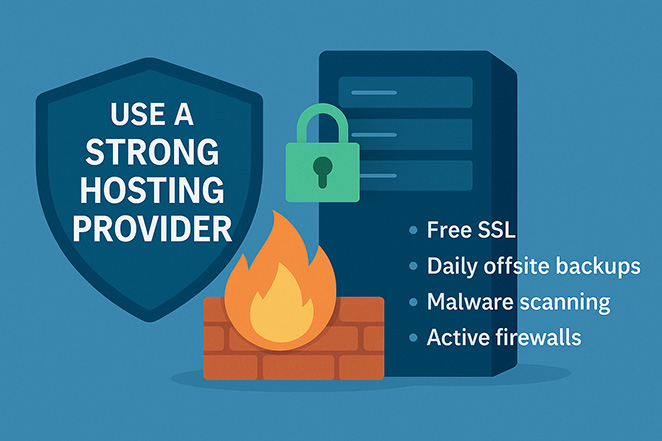
I’ve had reliable results with SiteGround and Bluehost. They handle the essentials behind the scenes so you can focus on your store.
I go over the pros and cons here: how to choose WordPress hosting
2. Always Use SSL (HTTPS)
SSL protects the data your customers share with your site, like passwords, payment info, and contact details. It keeps everything encrypted so no one can intercept it.
Most good hosts include free SSL through Let’s Encrypt, but sometimes you need to turn it on manually in your hosting dashboard. If that doesn’t work, the free plugin Really Simple SSL can handle it for you.
If you don’t see a padlock icon in your browser’s address bar, something’s not set up right, and your visitors will notice.
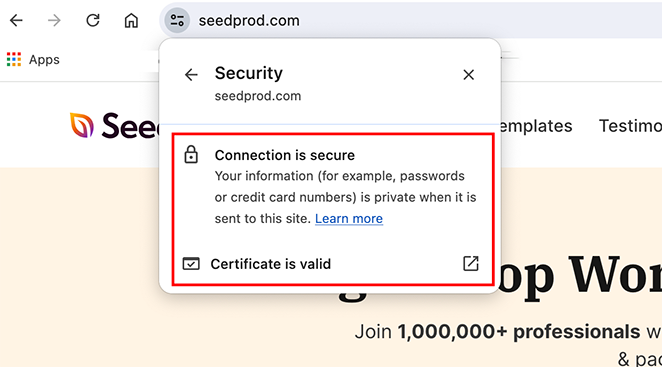
For a full walkthrough, see my guide on how to add SSL to your WordPress site
3. Keep WordPress, Plugins & Themes Updated
Most hacks happen because something’s out of date. It could be a plugin, your theme, or even WordPress itself.
Updates often include security fixes, so skipping them means leaving known issues open for attackers.
I keep auto-updates turned on for WooCommerce, my theme, and the WordPress plugins I rely on most. Once a week, I do a quick check to make sure nothing was missed.
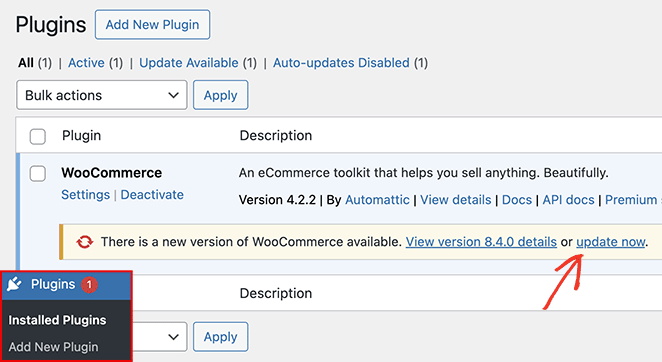
If I’m not using a plugin or theme anymore, I remove it completely. Even deactivated ones can be a risk.
It only takes a few minutes, but it makes a big difference in keeping your site safe.
4. Use Strong Passwords + Two-Factor Authentication
Weak passwords are one of the easiest ways for bots to break into your site. If you’re using something simple or still logging in as “admin,” it’s time to make a change.
Two-factor authentication, or 2FA, adds an extra layer of security to your login. After entering your password, you’ll need to provide a second code, usually sent to your phone or email.

This way, even if a hacker steals your password, they can’t access your site without that second verification step. It’s one of the best ways to stop unauthorized access and brute force attacks.
Plugins like WP 2FA, Duo, and Wordfence Login Security make setting up 2FA straightforward, even if you’re not tech-savvy.
5. Limit Login Attempts + Add CAPTCHA
Brute force attacks happen when bots try to break into your site by guessing your username and password thousands of times. These automated attempts can overwhelm your login page and succeed if your passwords are weak.
I use the Limit Login Attempts Reloaded plugin to block repeated login attempts after a few failures. It’s quick to set up and makes a big difference.
I also add CAPTCHA to login pages, checkout forms, and contact forms to stop bots from creating fake accounts or submitting spam.
Cloudflare Turnstile works well because it runs in the background and doesn’t slow down real users. WPForms also offers built-in CAPTCHA if you’re using it for your forms.
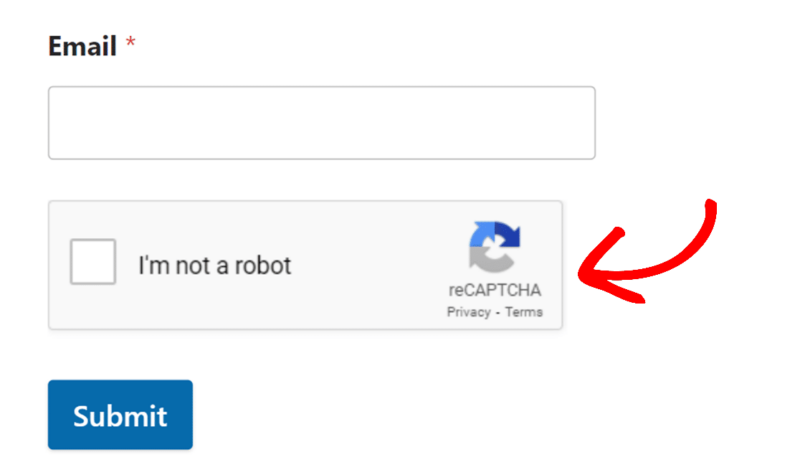
You won’t notice it much, but it quietly filters out junk before it reaches you.
6. Install a Security Plugin
A good security plugin works in the background to keep threats out, even when you’re not logged in. It can block suspicious traffic, scan for malware, and alert you if something looks off.
I’ve used Wordfence, Sucuri, and iThemes Security on different sites. They each have free versions that offer solid protection, and you can always upgrade later if you need more features.
You don’t need all of them, just pick one and get it running. Most plugins walk you through the setup with a simple wizard, and once it’s active, you’ll start seeing login reports, scan results, and other helpful updates.
For a side-by-side comparison, check out my list of the best WordPress security plugins.
7. Use a Custom WooCommerce Login URL
Most WordPress sites use the default login page at /wp-login.php or /wp-admin, and bots know exactly where to find it. Creating a custom login page helps block automated attacks and makes your store feel more professional.
I use SeedProd to build a custom login page that matches the rest of my site. It’s easy to design and works just like the regular login screen, without being in such an obvious spot.
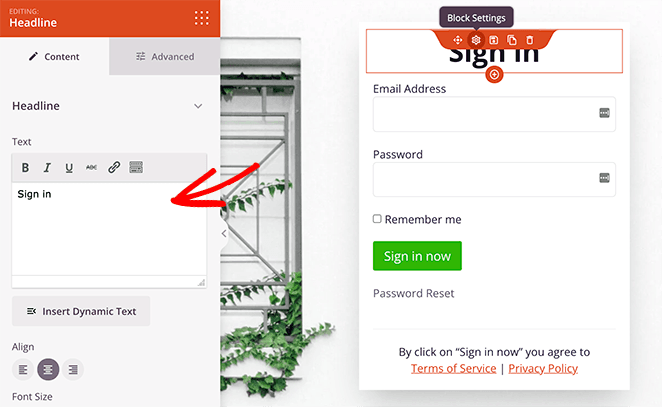
If you want to set one up, this guide walks through how to change your WordPress admin login URL.
Be sure to bookmark your new login link so you don’t lose access.
8. Secure Your WooCommerce Checkout
The checkout page is where customers share their most sensitive information. If it looks off or doesn’t feel secure, people will leave before completing their purchase.
I always stick with trusted payment providers like Stripe or PayPal. They handle the compliance side, including encryption and fraud prevention, so I don’t have to worry about storing any payment details on my site.
You can even create a custom checkout page with extra functionality.
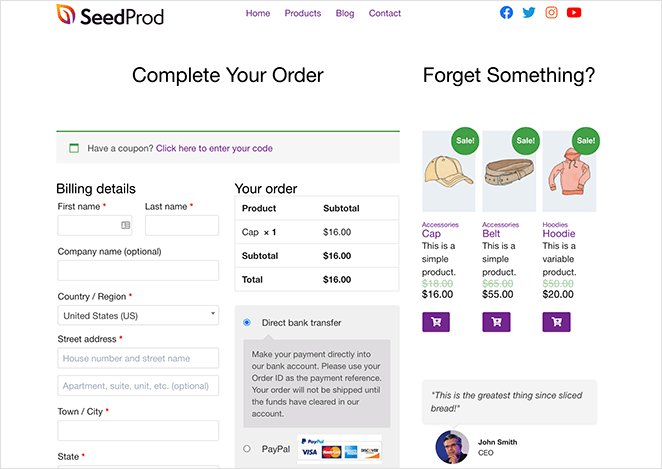
But, make sure your checkout page:
- Uses HTTPS
- Includes trust badges from your payment provider
- Matches the rest of your site’s design
Avoid any redirects or layout changes that might make visitors second-guess the page.
You can find setup tips here: how to accept Stripe payments in WordPress
9. Back Up Your Site Regularly
Even with strong security, things can still go wrong. A bad plugin update, a simple mistake, or a malware attack can take your store offline without warning.
That’s why backups are part of my core security setup. I don’t wait until something breaks to start backing up.
I use Duplicator, a popular WordPress backup plugin, to create full backups. It packages everything, files, database, and settings, into one downloadable file.

I always store backups offsite, like in Google Drive or Dropbox, so they’re safe even if my hosting server has issues.
For busy stores, daily backups are best. Smaller or newer sites can usually get by with weekly backups, as long as they happen regularly.
Having a good backup means you can recover quickly without starting over.
For the full steps, see my guide on how to back up your WordPress site.
10. Set the Right User Roles
Not everyone needs full access to your WordPress dashboard. Giving admin rights to the wrong person, even by accident, can lead to serious problems like deleted content or security issues.
I only assign the Administrator role to people I fully trust to manage everything. For store staff, I use the Shop Manager role.
It gives them control over orders and products without letting them change plugins or site settings. If someone is only helping with content, the Editor role is a better fit.
WordPress includes several user roles by default, each with its own set of permissions. Choosing the right one from the start helps keep your site safer and easier to manage.
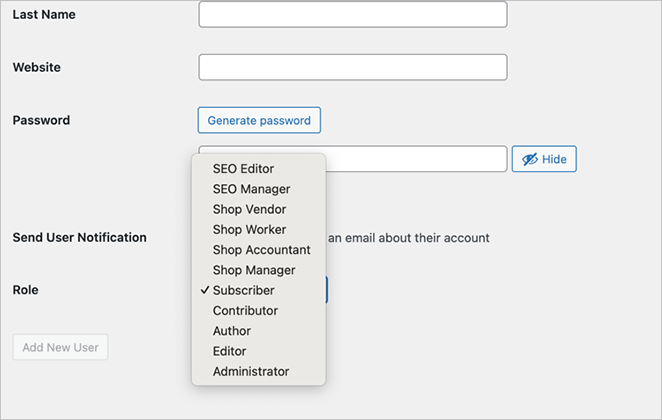
I also review my user list regularly. If I see accounts that haven’t been used in a while, I remove them. It’s one of the simplest ways to tighten up access.
If you want to go a step further, you can password protect parts of your WordPress site to limit access even more.
11. Hide wp-admin + Disable XML-RPC
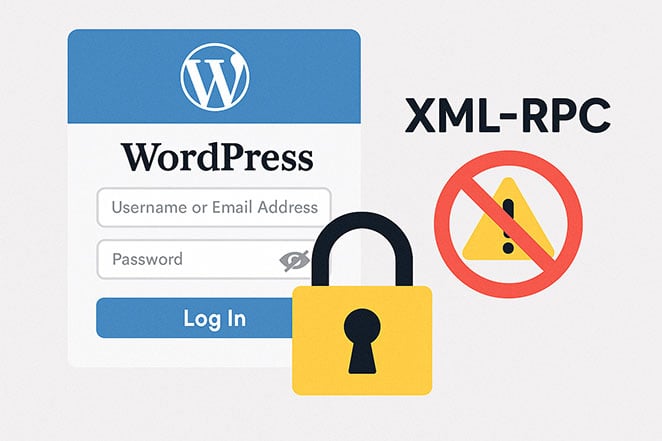
Two of the most common targets for automated attacks are the login page and a WordPress feature called XML-RPC.
XML-RPC is a system WordPress uses to let apps and services communicate with your site remotely, like the WordPress mobile app or Jetpack plugin. Unfortunately, hackers often exploit it to overload your site with malicious requests or try to break in.
Hiding your login page and disabling XML-RPC if you don’t use it makes your site much harder to attack.
I use iThemes Security to hide the login area and disable XML-RPC without touching any code.
12. Monitor Your Site for Suspicious Activity
Security isn’t just about setting things up once. You need to keep an eye on what’s happening behind the scenes.
I get email alerts for important events like failed login attempts or file changes. Wordfence and Sucuri both offer this and notify you right away if something unusual occurs.
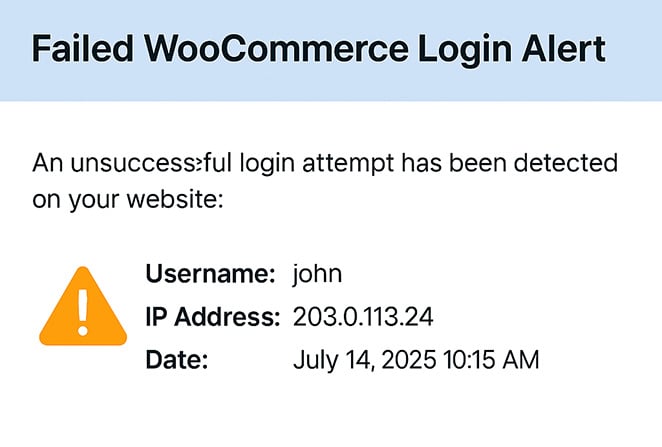
It also helps to watch your traffic. MonsterInsights is a popular Google Analytics plugin for WordPress that makes it easy to track visitors. It helps spot sudden spikes or strange referral sources that could signal bot attacks or spam.
As a backup, I run my site through Google Safe Browsing and VirusTotal about once a month. These tools scan for malware or blacklisting so you can act fast if needed.
13. Understand PCI Compliance
If you accept credit card payments, your store must follow PCI compliance rules. These standards protect payment data and keep customers safe.
The good news is payment providers like Stripe and PayPal are PCI Level 1 compliant. They handle most of the security requirements for you.
That means you don’t have to store sensitive payment info on your site, which lowers your risk.
Still, it’s important to keep your WooCommerce, plugins, and site updated and secure to stay compliant.
Bonus: Add a Privacy Policy + Terms Page
Having a privacy policy and terms page on your store builds trust with your customers. It shows you take their data seriously and follow the rules.
Most countries require these pages by law if you collect personal info or process payments. Even if you’re just starting out, adding them protects you and your business.
You can create these pages easily using WordPress templates or plugins, or generate them with online tools.
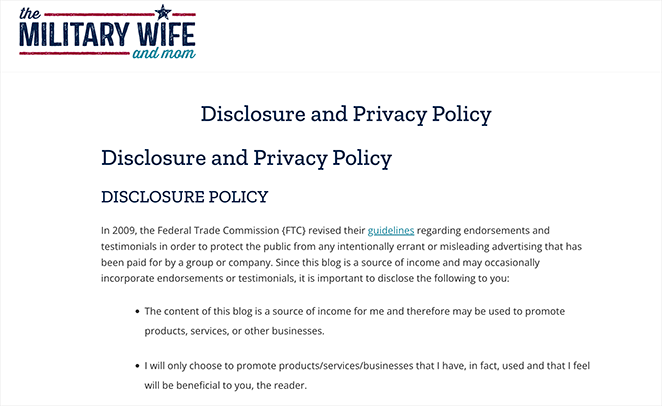
For a beginner-friendly guide, check out my post on how to create a WordPress privacy policy.
FAQs About WooCommerce Security
Final Tips for Keeping Your Store Safe
Securing your WooCommerce store doesn’t require a tech degree or hours of work. By focusing on a few key areas like choosing reliable hosting, using SSL, keeping software up to date, and managing user access, you’ll block the most common threats.
I like using SeedProd because it helps me create professional WooCommerce pages quickly and without hassle. When you combine that with a solid security plugin and regular backups, your store will be in a much safer place.
While you’re here, you may also find the following WooCommerce guides helpful:
- Top Mistakes Beginners Make Building WordPress Sites
- Best WooCommerce SEO Plugins for Higher Rankings
- How to Customize Your WooCommerce Shop Page (Without Code)
Thanks for reading! We’d love to hear your thoughts, so please feel free to join the conversation on YouTube, X and Facebook for more helpful advice and content to grow your business.

